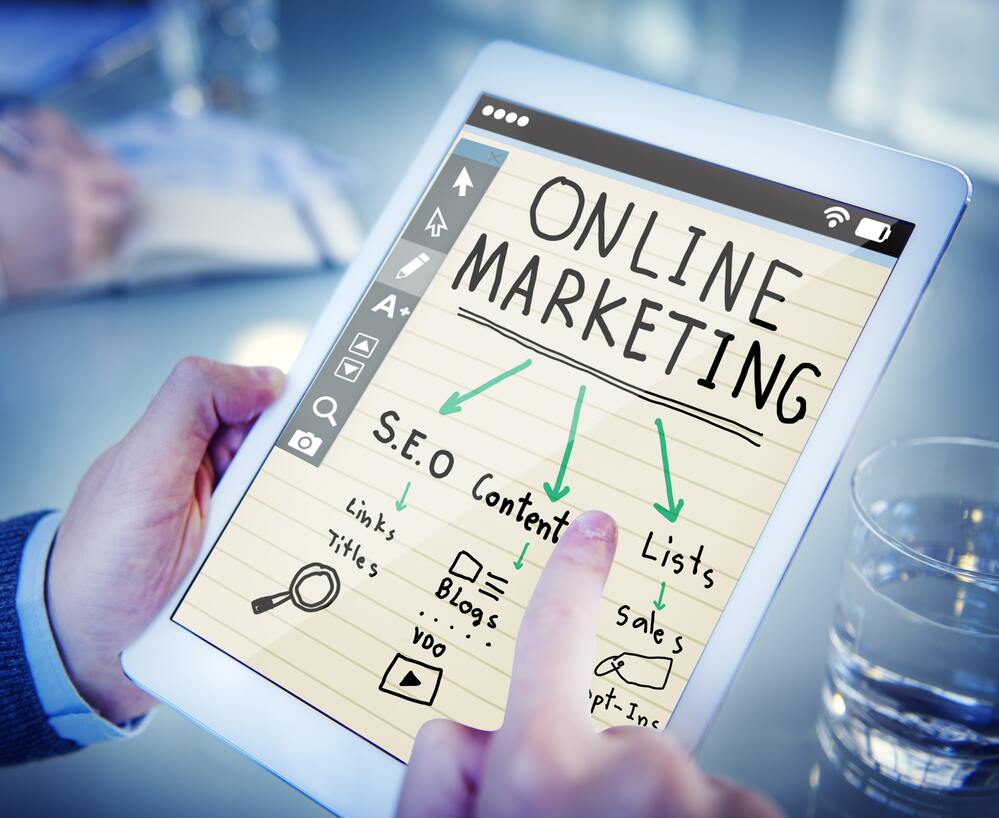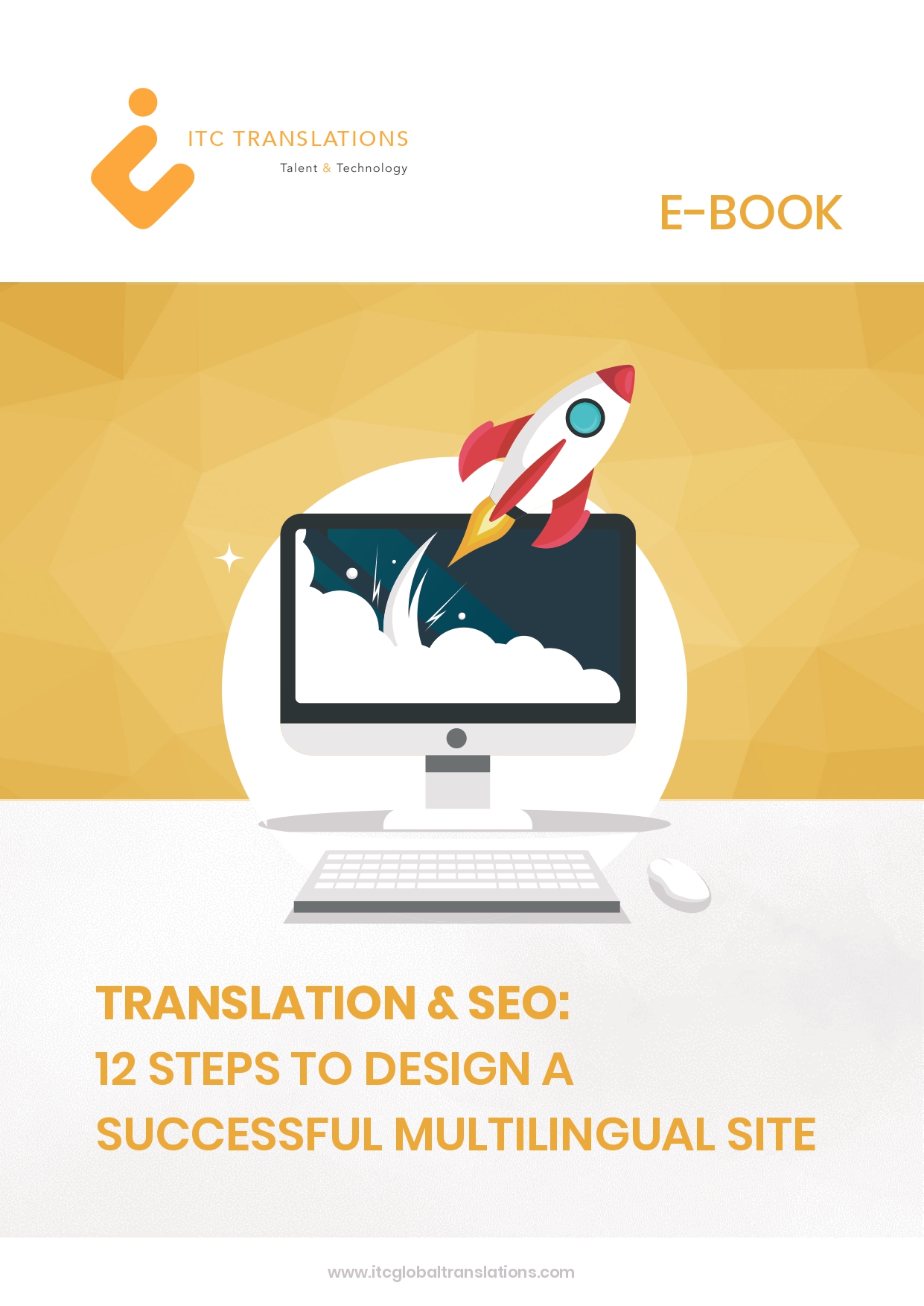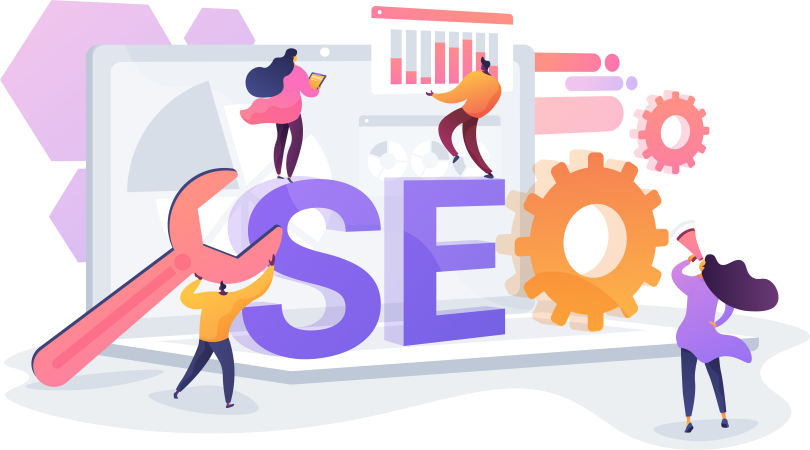
Draw more traffic to your website for increased sales and engagement with SEO (Search Engine Optimization) translation services from ITC Global.
ITC Global offers a range of services tailored to companies or web agencies that want to implement their SEO strategy in another language.

Download our free e-book “Translation & SEO: 12 Steps to design a Successful Multilingual Site”.
SEO means optimizing your website content so that it responds to queries your ideal customers or clients enter in search engines.
Providing relevant content improves your visibility in search engine results.
Localizing your website for another market isn’t as simple as translating keywords into another language.
Internet users in different markets may use different keywords to search for the same thing.
This service requires additional research and expertise to choose a keyword that provides the best results.
Let’s look at a couple examples.
We’ve created a specific methodology for reviewing and localizing keywords and other website elements for the best search engine results.
One of the main research tools we use is Semrush, a platform for improving online visibility and discovering marketing insights.
In order for your site to appear in the top results on search engines, it’s important to understand user intent.
What are they going to search for?
Why?
This will allow you to build your content around the user’s intent by integrating terms people search for and optimizing key SEO elements like Title and Description tags, HN tags, image ALT text, internal links, etc.
All these elements will help improve your website’s visibility in search results.
Google is the leading search engine around the world, with 90% of market share.
However, other search providers rank higher in specific countries.
For example, more than 63% of internet users in Russia go to Yandex and in China, Baidu controls 61% of the search market.
Each search engine has specific algorithms that impact what keywords and sites rank higher, so your SEO translation agency will help you tailor your SEO strategy to the most popular search engines in your target market.
These days, so much happens online and no industry can escape this phenomenon.
SEO translation is an important tool for connecting with people looking for your products or services.
Considering that 61 percent of B2B transactions start online, it’s clear that organic SEO isn’t just important for merchant sites targeting the general public.
While organic search is the main source of traffic for e-commerce sites (41 percent), this figure climbs to 64 percent for B2B sites. But that’s not to say that SEO isn’t important for other sites. After all, more than 80 percent of search engine users ignore paid results to focus on organic results.
For any type of site, SEO translation is essential when you need to localize your website.
To be honest, it’s a waste of time and money to translate your site if no one visits it and it doesn’t help you grow your business.
When you work with ITC Global for your website’s SEO translation, you can trust that your content will align with your SEO strategy, boosting website traffic by meeting internet user expectations and search engine requirements.
Our SEO translation agency provides:

A title tag is an HTML code tag that indicates a web page’s title, which appears on search engine results pages and a browser’s title bar or a page’s tab.
Optimizing this tag can improve search rankings.
A description tag is an HTML code tag that indicates a web page’s description, which is shown on the search results page.
Optimizing this tag will not improve search rankings but is crucial for increasing click-through rate (CTR) and driving user engagement.
HN tags are HTML code tags that indicate the main topic and subtopics on a web page.
Optimizing this tag can improve search rankings.
There are six heading tags, ranging from H1 to H6.
These tags not only enhance content clarity for readers but also assist search engines in identifying the primary information on a page.
Image ALT text describes images so people who are blind or have low vision can use screen-reading tools to access non-text content on a website.
These descriptions improve accessibility and give search engines more information about your site, improving rankings.
An internal link is a link from one page on your website to another page on your site.
It helps search engines and users navigate and find content on your website.
If there are no links pointing to a particular page on your site, a search engine won’t index it and it won’t appear in search results.
User intent is the goal of a search using a search engine.
There are four types of queries that indicate user intent: informational, navigational, transactional, and commercial.
Number of monthly search results for a given keyword over the last 12 months.
This metric is used for evaluating the popularity of a keyword.
Keyword difficulty is an estimate (out of 100) for how difficult it will be for a site to appear on the first or second page of results for a given keyword.
CPC is the cost advertisers pay for each user click on an ad generated by a particular keyword through Google Ads.
Organic search results are the listings on a search engine results page (SERP) that appear because of their relevance to the search query, rather than because they are advertisements.
These results are not influenced by paid advertising and are determined by the search engine’s algorithms based on factors such as relevance to the search query, domain authority, backlinks, and other SEO considerations.
They are called “organic” because they grow naturally out of the search engine’s algorithmic process, rather than being planted there as paid ads.
Organic search is important because it tends to bring more targeted traffic to a website, as users clicking on organic results are often looking for something very specific that matches their needs.
This can lead to higher engagement and conversion rates for websites that rank well organically.
These results are pay-per-click advertisements that are featured at the top of search engine pages.
Advertisers pay when a user clicks on their link.
The cost depends on how popular the keyword is and how relevant it is to the user’s search, among other things.
SERP features (Search Engine Results Page) are additional elements that appear in search results alongside the traditional organic links. They provide extra information or interactions to enhance the user experience.
Some of the most common SERP features include:
Long-tail keywords generate organic search traffic for a website.
These are very targeted search terms specifically tailored to a user’s intent.
These keywords have low search volume, low competition and usually high conversion rates.
We call these “long-tail” keywords because if you rank your keywords based on search volume, they’ll be in the “long” part of the search demand curve, which means that very few people search for these specific terms.
However, although the search volume is low, in comparison to generic keywords, it’s often easier to rank higher in search results by targeting these long-tail keywords, which typically lead to higher conversion rates.
This is because these keywords indicate a clear customer need that you can address; they’re based on intent.
Speak the language of your customers, prospects, partners, and employees around the world with ITC Global’s full suite of solutions powered by our unique blend of talent and technology. Every language solution you need, from translation to AI technology.
Tailored to you. All in one place.
Our resource center has lots of related information to explore. Here are some articles to get you started.